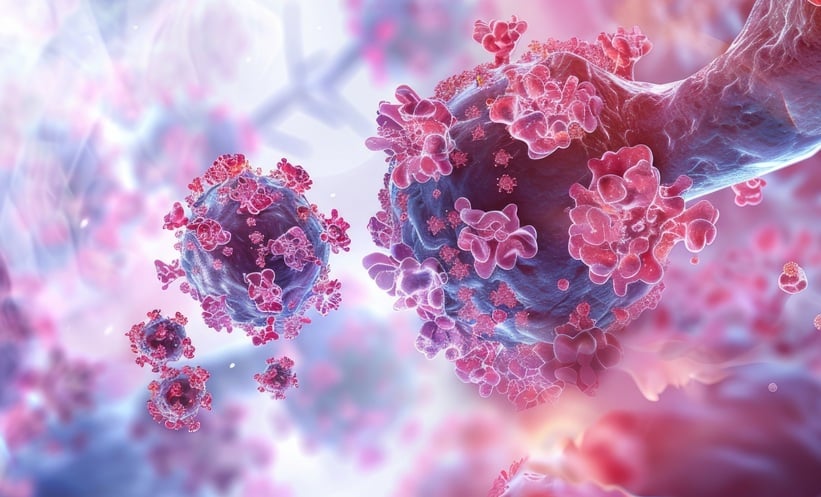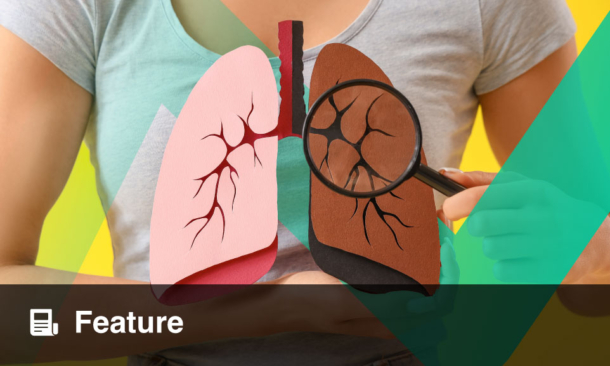Abstract
Oxy-hydrogen gas (HHO) is a gaseous mixture of molecular hydrogen and molecular oxygen that is generated by the electrolysis of water and delivered in a 2:1 ratio (66% and 33%, respectively) through the use of noninvasive inhalation devices such as nasal cannulas or nebulisers. Although there is a paucity of scientific evidence supporting this new and emerging therapy, initial investigations indicate that HHO proffers cytoprotective qualities, typically by reducing oxidative stress and attenuating the inflammatory response. These aspects are particularly favourable when considering respiratory medicine because underlying inflammation is known to drive the pathological progress of numerous respiratory conditions, including asthma, chronic obstructive pulmonary disorder, and, pertinently, coronavirus disease (COVID-19). Direct delivery to the lung parenchyma is also likely to increase the effectiveness of this emerging medical therapy.
This narrative review aims to delineate how this particular combination of gases can affect cellular processes at the molecular level by focussing on the evolutionary requirement for both oxygen and hydrogen. Furthermore, the authors assess the current available data for the safety and efficacy of HHO in a clinical setting.
INTRODUCTION
During both acute and chronic respiratory conditions, including severe coronavirus disease (COVID-19) infection, the primary physiological response is to synthesise distress proteins, which include cytokines, chemokines, and growth factors. This phenomenon is known as the cytokine storm, an event which can exacerbate the inflammatory response and rapidly increase the host’s temperature in an attempt to eradicate pathogens.1 Such proinflammatory mediators increase the production of reactive oxygen species (ROS) both within the mitochondrial electron transport chain (ETC) and within recruited immune cells, such as neutrophils and macrophages,2 by the activation of enzymes such as NADPH oxidases.
Mitochondrial dysfunction often occurs when cellular demand for the high-energy phosphate molecule ATP increases during times of cellular stress.3 This situation can lead to congestion in the flow of electrons within the ETC, resulting in excessive leakage of electrons. Rogue electrons are free to combine with molecular oxygen at will, forming free radicals including the superoxide anion, which dismutates to hydrogen peroxide. The reaction within the immune response cells, however, is entirely different. The mitochondrial content within these cells is considerably lower than in somatic cells, and therefore is not a significant source of ROS. Instead, granulocytes utilise NADPH oxidase enzymes to produce a highly oxidative respiratory burst containing a myriad of ROS,4 which can include superoxide anions, hydrogen peroxide, hydroxyl radicals (in the presence of iron [Fe] ions), and hypochlorous acid, the latter through the action of myeloperoxidase. Mounting evidence suggests this is important when considering respiratory medicine because elevated levels of granulocytic cells are often observed in the bronchoalveolar lavage fluid of patients with astringent pulmonary diseases.5,6
ROS delivered by such granulocytes can be extremely damaging to biomolecules, including proteins, carbohydrates, lipids, and nucleotides, with intense and acute elevation of ROS consistent with acute and chronic inflammatory conditions.7 Within the delicate parenchymal tissue, such assault often induces degeneration of epithelial cells, producing hyalin fluid. This process is known to contribute significantly to cellular hyperplasia and reduce the capacity for oxygen exchange. Raised ROS levels can also directly modify DNA nucleotides, affecting genetic transcription, and form adducts upon essential epigenetic and metabolic enzymes.8-10 Such post-translational oxidative modifications to either nucleotides or proteinaceous enzymes often lead to aberrant enzymatic activity, causing fluctuation of essential energy-producing processes and affecting mitochondrial function, as well as influencing genetic transcription events.
HHO is an emerging medical gas, generated from the electrolysis of water. HHO inhalation is a noninvasive therapy done via a nasal cannula or mask, allowing the gas mixture to directly enter the respiratory system. In addition to oxygen delivery, HHO also provides molecular hydrogen (H2) promptly to the lung parenchyma, the target tissue for respiratory infections. Research into H2 therapy is rapidly gathering momentum and studies have identified H2 as having antioxidant scavenging properties,11,12 neutralising the deleterious hydroxyl radical and peroxynitrite ion. Presumably, other modes of action of H2 are also important as the reaction kinetics between H2 and these respective biomolecules remain in question.13
Despite research into the efficacy of HHO therapy still being in its infancy, HHO inhalation has been recommended by the Chinese government as a treatment of nosocomial COVID-19 symptomology.14
AIMS
As the global COVID-19 pandemic threatens both individual health and healthcare systems globally, and, as yet, there is little effective treatment for this novel disease, this review aims to explain the HHO generation process and the molecular benefits of combining oxygen and hydrogen inhalation therapy for COVID-19 and other inflammatory respiratory conditions. The authors have collated data from empirical and evolutionary studies and in-human clinical trials and offer an explanation as to how the molecular mechanisms behind HHO therapy may be beneficial for respiratory health.
DISCUSSION
Generation, Delivery, and Safety Profile of Oxy-hydrogen
HHO is a stoichiometric mixture of H2 (66%) and O2 (33%) obtained through the electrolysis of water (H2O). As pure water has a low electrical conductivity and requires an excess of energy to degrade the hydrogen bonds that hold the molecule together, it is therefore necessary to add a water-soluble electrocatalyst (e.g., K+, Mg2+, or Na+) to reduce the activation threshold.15 HHO gas can be easily generated by adding electrolyte compounds, such as sodium or potassium hydroxides, to distilled water and applying a low-voltage (9–13 V) direct current.16 The O2 and H2 would collect in the gas phase as the water would become rapidly saturated and gases such as H2 have a relatively low solubility, as discussed by Hancock et al.17
In its simplest form, an electrolyser cell contains two electrodes, the positive cathode and a negative anode, separated by an ion exchange membrane. Passing an electrical current through the water decomposes H2O into H+ and OH– ions. These electrophilically charged molecules are then attracted to the opposingly charged electrode where they liberate as gases. The chemical activity at the anode is 2H2O à O2 + 4H+ + 4e– whilst the activity at the cathode equates to 4H+ + 4e– à 2H2. This method ensures separation utilising the 2H2O à 2H2 + O2 reaction without returning it to the aqueous state.
As interest grows in this particular field of research, the industry surrounding the development of HHO products is also expanding. An HHO generator’s standard specification incorporates an electrolysis unit, a filter, and an electronic control unit. The control unit can adjust the voltage directed to the positive and negative plates. Once formed, HHO can enter the respiratory system directly by inhalation through either a nasal cannula or an inhalation mask at a peak rate of 2–3 L/min. Gas inhalation through nasal cannulas is a safe and noninvasive delivery method widely used globally for pure oxygen inhalation within healthcare settings.
Although being comprised of the highly flammable gases hydrogen and oxygen, known to reduce the combustion threshold for most substances, the safety profile of HHO in a clinical setting can be regarded as favourable. This is partly because of the high autoignition threshold of HHO (570 οC),18 the contained generation within a sealed system, and because HHO typically gets used as generated. Although the likelihood of explosion when using an HHO-generation device is negligible, consideration over the combustion potential in the presence of a naked flame is warranted; consequently, activities that involve use of a flame, including smoking, during treatment pose a significant risk of igniting HHO and causing potential harm.
The Requirement for Oxygen
Rapid oxygenation of the Earth’s atmosphere, known as the Great Oxygen Event, took place approximately 2 billion years ago during the early Paleoproterozoic era.19 It is assumed that this event was triggered by photosynthesising cyanobacteria that produced oxygen as a waste product.20 As the rapid rise in atmospheric O2 presented a new challenge for cellular energetics, single-celled life forms were forced to adapt, including giving rise to multicellular life.
On a cellular level, O2 is integral to the process of energy generation during aerobic respiration. The cardinal role here is for oxygen to act as a terminal electron acceptor during aerobic respiration.21 Aerobic respiration is the biochemical process of ATP synthesis that occurs in the mitochondria. ATP synthesis is crucial to all cellular processes as it is a high-energy molecule responsible for donating energetic phosphate moieties during cellular metabolic pathways.
With eight electrons and eight protons in each molecule, O2 is an electrophilically neutral diradical compound with two unpaired electrons in its outer shell. This neutrality allows the O2 molecule to easily diffuse through cellular membranes and into the mitochondria where it is required to accept electrons donated by complex IV (cytochrome oxidase) in the ETC. If oxygen is not present to fulfil this role, aerobic respiration, responsible for producing a theoretical 38 ATP per glucose molecule, discontinues and the less efficient anaerobic respiratory pathway is initiated, generating a mere two ATP per glucose molecule.22 Prolonged anaerobic activity is unsustainable in higher life forms as the energy produced is insufficient to sustain essential cellular functions. Granulocytic leukocyte cells, such as neutrophils, rely much more on glycolytic production of ATP because of a lack of mitochondrial presence in these specific cells,23,24 a factor that allows these cells to continue functioning even during hypoxaemia where oxygen supply is notably reduced.
As described above, oxygen is fundamental to the survival of higher organisms and the average adult (63 kg) consumes approximately 200 mL of O2 every minute at standard temperature and pressure,25 equating to 400 L per day. Once O2 is inhaled into the lungs from the atmosphere, it is exchanged for CO2 as O2 has a higher binding affinity with iron-containing haemoglobin in red blood cells. Healthy saturation of haemoglobin, a measurement of the percentage of haemoglobin molecules that carry O2, is between 94% and 98%.26 Saturation levels below this threshold typically lead to hypoxaemia, which if unrectified can lead to hypoxia: a condition where tissues do not receive adequate amounts of O2. This situation can progress to acute respiratory distress syndrome, multiple organ failure, and potentially death if left untreated.
Estimated oxygen usage in ambulances in the UK is reported to be in excess of 2 million times each year, equating to 34% of attended call-outs.26,27 In these cases, O2 therapy is not typically used to alleviate the symptoms of respiratory distress; instead, it is often used to prevent hypoxaemia in emergency conditions, including cardiac arrest and trauma. Oxygen is given to approximately one in five patients in nosocomial care.27 In this setting, O2 inhalation is prescribed for a vast array of life-threatening conditions, including those that cause a rapid onset of depressed breathing, such as anaphylaxis, COVID-19, opioid overdose, and pneumonia, as well as for persistent hypoxaemic complaints. By providing O2 therapy, clinicians are able to increase oxygen tension in the alveoli during such events, thereby decreasing the respiratory system’s workload by fulfilling the cellular demand for O2.28 Although widely used in emergency medicine, it is important to note that oxygen is also prescribed for the alleviation of chronic respiratory complaints such as asthma, chronic obstructive pulmonary disorder (COPD), cystic fibrosis, and paediatric respiratory disease.
The Requirement for Molecular Hydrogen
As the most basic element within the universe, it may come as no surprise that molecular hydrogen has played a pivotal role in the evolutionary process. One intriguing theory, highlighted by Andersson and Kurland,29 implies that the bacterial endosymbiont’s original function was to provide the host cell with H2.
The hydrogen hypothesis advocates for an archaeon host cell with a facultative anaerobic means of respiration, making use of CO2 as a metabolic substrate and producing H2 as a by-product, instead of being a committed aerobe with an immediate demand for ATP as suggested in the traditional endosymbiotic theory.29 Indeed, the last universal common ancestor has been described as having all enzymes associated with both mitochondria responsible for ATP production in aerobic organisms, and hydrogenosomes that facilitate metabolic processes in anaerobic organisms. Their later divergence can be explained by environmental pressures that ultimately led to natural selection events.
Although this debate has yet to be rectified, it has raised some thought-provoking questions worthy of further exploration. When considering the hydrogen hypothesis, of particular appeal is the homologous protein expression profile noted within both mitochondria and hydrogenosomes.30 Despite both organelles differing in their biochemical activities, they each have the capacity to encode for proteins of both complex I and II of the ETC. However, it is only the mitochondrial genome that can encode for elements of complexes III–IV and, importantly, ATP synthase. If, as suggested by Lewis et al.31 and others,32,33 hydrogenosomes and mitochondria are delineated from the same original symbiont, it is likely that mitochondria once had the ability to produce H2.
Yet another link to the evolutionary requirement for H2 in eukaryotes are the hydrogenase enzymes found in many species of photosynthesising organisms, including algae and higher plants. To exemplify, the single-celled green alga Chlamydomonas reinhardtii contains two Fe- hydrogenases (HYDA1 and HYDA2) that can receive electrons from ferredoxin during photosynthesis,34 reducing proton accumulation with the reaction 2H+ + 2e– à H2. Furthermore, homologous hydrogenase enzymes are also found in higher plants, including crops such as the legume Medicago truncatula35 and Oryza sativa subsp. japonica (rice).36 The frequency and diversity with which hydrogen-producing mechanisms have occurred along the phylogenic tree suggest an inherent biological requirement for H2 across all domains of life.
In addition to the activity of hydrogen-producing enzymes and organelles in eukaryotic species, many anaerobic bacteria metabolise H2. Typically, bacterial generation of hydrogen is linked with transition metal-containing (e.g., nickle/iron [NiFe] or iron/iron [FeFe]) hydrogenase enzymes that catalyse the reversible oxidation of hydrogen with the reaction 2H+ + 2e– à 2H2.37 Interestingly, hydrogen-producing bacteria are known to form symbiotic relationships with both plants and animal species, which may also fulfil the cellular requirement for H2 in multicellular organisms, including humans. Here, H2 is largely obtained from the symbiotic relationship between H2-producing intestinal microflora (e.g., Escherichia coli or Clostridium butyricum) and the host.38
Aside from the largely theoretical requirement for H2 in the early development of life, contemporary research is beginning to reveal that molecular hydrogen can act as a natural antioxidant in at least two possible ways: 1) through the selective scavenging of nonsignalling ROS/reactive nitrogen species, such as the hydroxyl radical and peroxynitrite, thus potentially reducing oxidative damage to cellular membranes and the inactivation of metabolic enzymes through oxidative post-translational modifications.39 It should be made clear that the reaction kinetics here are unfavourable13 and more research is needed before these claims can be verified and universally accepted; and, 2) via increased activity of nuclear factor erythroid 2–related factor 2 (Nrf2), a transcription factor responsible for upregulating the activity of the antioxidant response element, a cis-acting enhancer sequence located within the promotor region of more than 200 genes known to transcribe and translate antioxidant enzymes (e.g., catalase and superoxide dismutase) and cytoprotective proteins and peptides (e.g., glutathione-S-transferase and cytochrome P450 isoenzymes).40
In addition to the antioxidant effect H2 clearly provides, there is also a wealth of laboratory evidence that describes H2 as having both immunomodulatory and antiapoptotic effects in various plant and animal species. This may be largely attributed to increased activity of Nrf2.41 To illustrate, increased Nrf2 activity has been demonstrated to causally undermine expression profiles of NF-κB,42 a transcription factor associated with innate immunity and one responsible for promoting genetic transcription of numerous proinflammatory molecules.43 As well as downregulating the proinflammatory response at the genetic level, Nrf2 is known to respond to and upregulate expression of haem oxygenase, an enzyme that has a canonical function in reducing and preventing vascular inflammation.44 Also of interest, particularly when considering the broader immune response, is the influence of NF-κB on adaptive immune cells. Here, NF-κB can provoke and stimulate inflammatory T-cell differentiation.45,46 Therefore, enhancing or even prolonging the activity of Nrf2 within the nucleus is likely to have a significant effect on the inflammatory profile during disease.
The Benefits of Oxy-hydrogen in Respiratory Medicine
Although, as previously stated, research into the benefits of HHO as a medical gas is at an early stage, the recent pandemic concerning the severe acute respiratory syndrome coronavirus 2 (SARS-CoV-2) has highlighted the need for emergency respiratory care that is effective in reducing parenchymal inflammation. This need becomes of particular relevance as inflammatory exudate is known to contribute to the impairment of the alveoli’s oxygen-exchange capacity, further exacerbating hypoxaemic conditions during severe infection. In a recent study involving murine models of asthma conducted by Zhang et al.,47 1 hour of HHO inhalation per day was demonstrated to decrease airway resistance and reduce epithelial cell hyperplasia. Furthermore, significant reductions in the expression of proinflammatory mediators were identified, including chemokines (e.g., CXCL15), cytokines (e.g., TNF-α), and multiple interleukins (e.g., IL-4 and IL-6).47 These findings may prove to be particularly relevant as tocilizumab, an IL-6 intervention therapy, is currently being used to treat COVID-19 as well as autoimmune and other severe inflammatory conditions.48 However, the benefits of this treatment may be outweighed by the possible side effects, which include an increased occurrence of upper respiratory tract infections, hypertension, and gastrointestinal perforation.49
Despite the growing popularity of HHO as a potential medical therapeutic, there is, as yet, sparse evidence on the clinical safety of using HHO generators; however, initial in-human trials into the effects of HHO in patients with tracheal stenosis reported no adverse effects of treatment (n=35).50 Additionally, trials into the effects of HHO supplementation during severe COVID-19 infection are ongoing in the Hubei province of the People’s Republic of China,51 with Chinese health officials recommending HHO therapy in the national treatment protocol for coronavirus-associated pneumonia.14
Additionally, during a 3-month, in-human trial assessing the safety and efficacy of HHO inhalation therapy, a curative effect was noticed from the second week until the end of the trial in patients (n=70) with severe COPD.52 These findings are further supported by results from a 10-day, multi-centre, randomised, double-blind study that reported easement of COPD symptoms on observing days 1–7 (n=54).53 Similar findings have also been reported in studies of chronic inflammatory respiratory diseases, including asthma, cystic fibrosis,54 and COVID-19.55 Here, increased oxygenation and the cellular protective effects of molecular hydrogen has been shown to recover poor blood saturation levels of O2 and reduce the inflammatory response, thus preventing and rectifying hypoxaemia and reducing the likelihood of Type 1 respiratory failure.57
Future Perspectives
Research into the biochemical properties of medical gases is beginning to reveal that, alongside O2, H2 may also be of evolutionary significance, perhaps by acting as part of the suite of gaseous signalling molecules. However, laboratory trials utilising human-derived cell cultures and animal models will be necessary if the molecular mechanisms that influence somatic responses are to be elucidated. In silico models of distribution patterns, reaction kinetics, and longevity will also be required if a full understanding of signalling behaviours is to be reached. Furthermore, as much of the clinical data available have yet to be substantiated, data obtained from patient trials will need to be hastened if HHO therapy is to be widely used as a treatment in general medicine.
CONCLUSION
HHO treatments become of particular relevance when considering the increasing occurrence of highly contagious and novel viruses; therefore, there is an urgent need for sustainable and effective treatment protocols that can alleviate the most severe symptoms of such respiratory tract infections without the need for critical care.
Emerging clinical and preclinical54,55 data suggest that HHO inhalation is both safe and efficacious in treating inflammatory-related pulmonary disorders. Interestingly, despite objective research into the efficacy of HHO therapy being relatively new, initial findings suggest inhalation of these gases in stoichiometric proportions can provide symptomatic relief from chronic and acute respiratory conditions, with asthma, COPD, and cystic fibrosis being examples. Therefore, it is conceivable that combining oxygen, a substance known to alleviate respiratory distress by increasing alveolar oxygen tension and improving O2 saturation of haemoglobin, with hydrogen, an element that displays anti-inflammatory and antioxidant qualities, in analeptic doses reduces the significant burden on lung parenchyma during disease. In order to confirm the data generated by preliminary investigations into HHO inhalation, further clinical, preclinical, and laboratory analysis is necessary.







